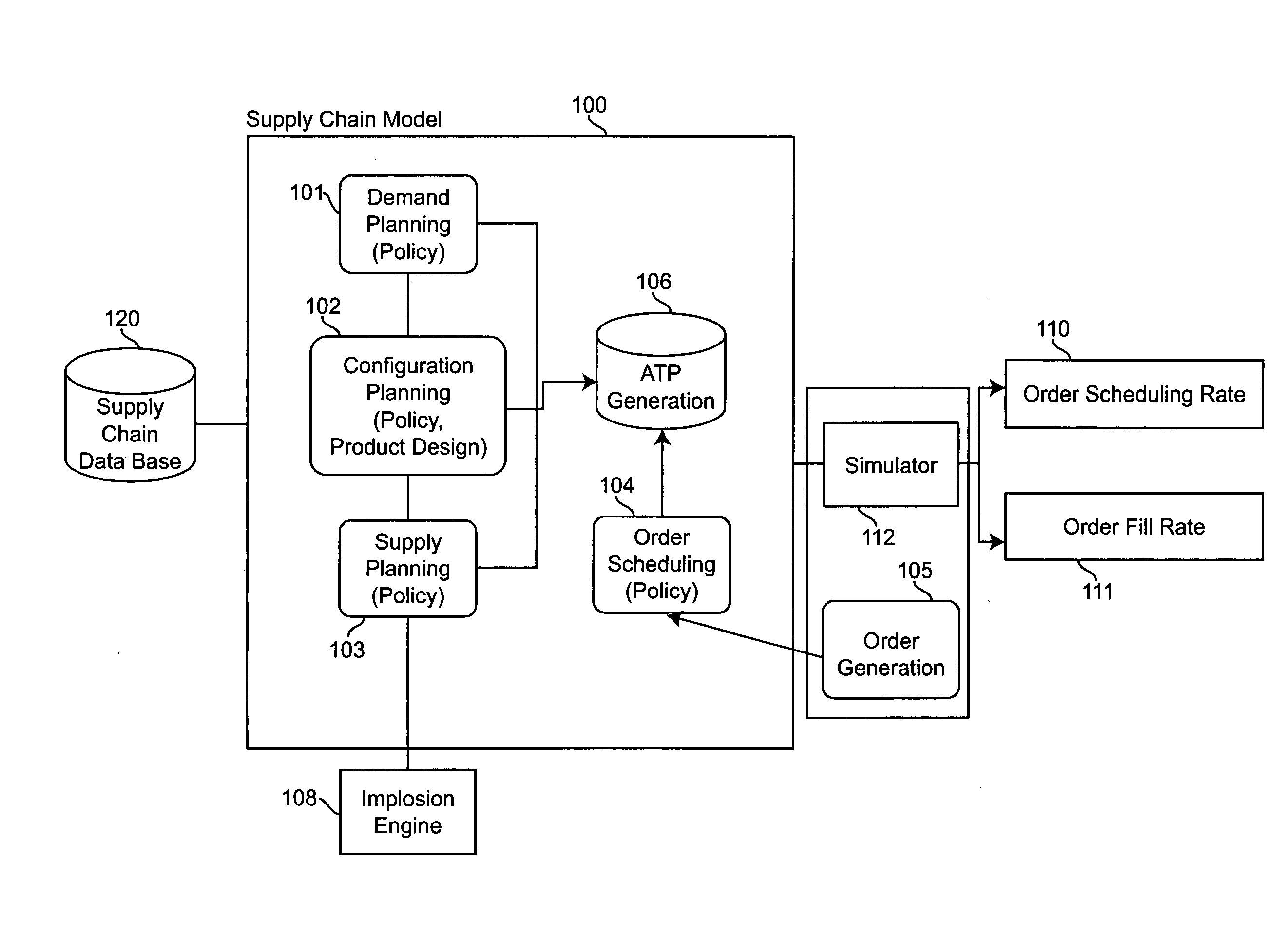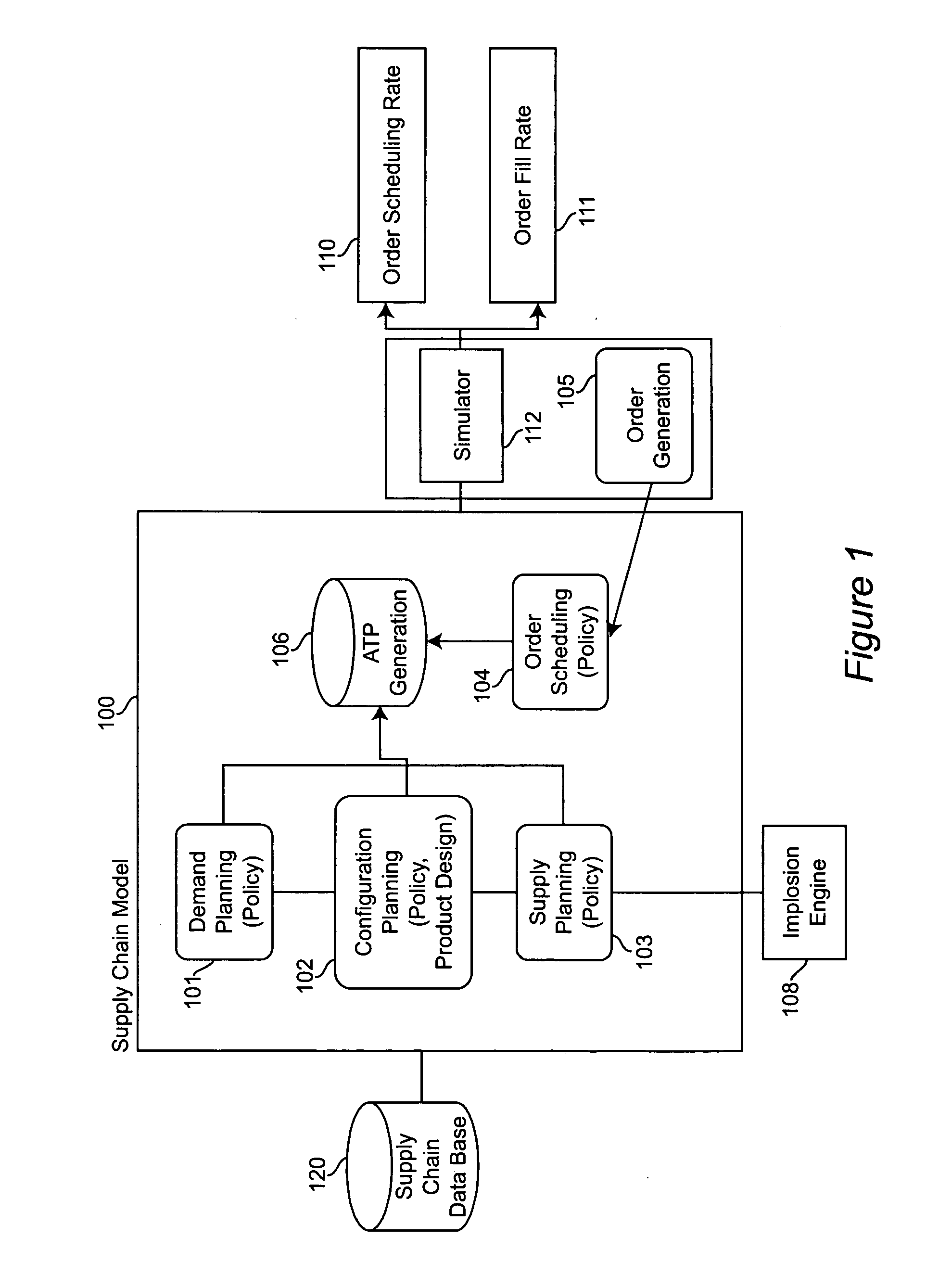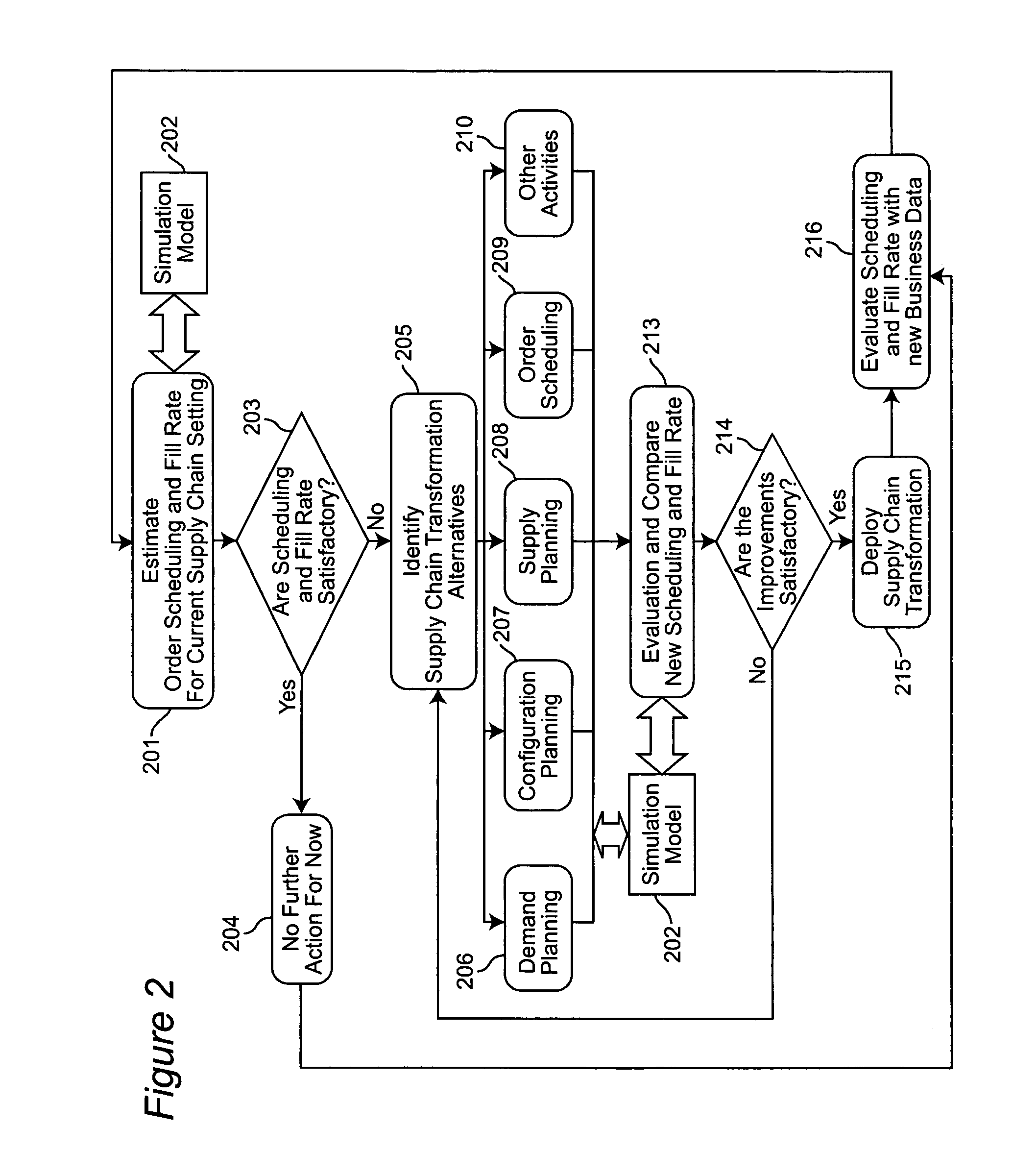Method and system for estimating order scheduling rate and fill rate for configured-to-order business
a technology of order scheduling and filling rate, applied in the field of supply chain analysis, can solve the problems of affecting supply chain performance, difficult to estimate system performance, high cost, etc., and achieves the effects of improving performance, tightening capacity, and increasing uncertainty
- Summary
- Abstract
- Description
- Claims
- Application Information
AI Technical Summary
Benefits of technology
Problems solved by technology
Method used
Image
Examples
Embodiment Construction
[0012]FIG. 1 is a block diagram illustrating the system which implements the method for estimating order scheduling rate and order fill rate for CTO (Configured-to-Order) business. The order scheduling rate here is defined as percentage of customer orders that are assigned and communicated scheduled ship dates. The customers typically request when they would like to receive the products that they are ordering. Depending on the availability of finished products and components, the scheduled ship date of the order is designated to be same as the customer requested date or later. The order scheduling rate reflects the percentage of customer orders that may not be automatically scheduled within certain scheduling horizon in the system. The order fill rate is defined here as the percentage of scheduled orders that are filled on the scheduled date.
[0013] The Supply Chain model 100 is a process of a CTO supply chain, where customer orders are processed and fulfilled. This model consists o...
PUM
 Login to View More
Login to View More Abstract
Description
Claims
Application Information
 Login to View More
Login to View More - R&D
- Intellectual Property
- Life Sciences
- Materials
- Tech Scout
- Unparalleled Data Quality
- Higher Quality Content
- 60% Fewer Hallucinations
Browse by: Latest US Patents, China's latest patents, Technical Efficacy Thesaurus, Application Domain, Technology Topic, Popular Technical Reports.
© 2025 PatSnap. All rights reserved.Legal|Privacy policy|Modern Slavery Act Transparency Statement|Sitemap|About US| Contact US: help@patsnap.com



